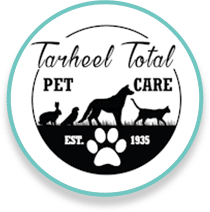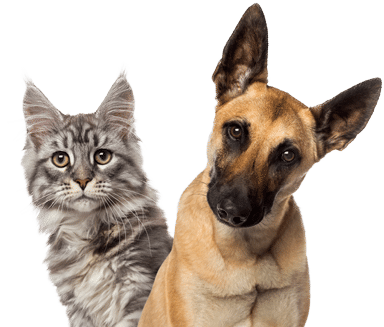Grooming can be a stressful experience for anxious pets, but with the right approach, it can become a calm and comfortable process. Our expert guide on effective grooming tips for anxious pets will provide you with the confidence and techniques needed to ensure your furry friends feel safe and relaxed.
Effective grooming tips for anxious pets include creating a calm environment, using positive reinforcement, desensitizing them to grooming tools, maintaining a consistent grooming schedule, and using gentle techniques. These methods help reduce stress and make the grooming experience more pleasant for your pets.
- Understanding Pet Anxiety During Grooming: What You Need to Know
- Creating a Zen Den: Setting Up a Calm Grooming Environment
- Transform Grooming with the Power of Positive Reinforcement
- Desensitizing Your Pet to Grooming Tools: Step-by-Step Guide
- Grooming Tips for Anxious Pets: Expert Strategies Revealed
- Consistency is Key: Maintaining a Stress-Free Grooming Schedule
- Gentle Grooming Techniques for a Calm, Happy Pet
- Ensuring a Stress Free Grooming Experience for Your Anxious Pets
Key Takeaways:
- Understanding your pet’s anxiety triggers and signs is the first step in making grooming a more comfortable experience.
- Creating a calm and soothing environment can significantly reduce your pet’s grooming anxiety.
- Using positive reinforcement, such as treats and praise, can create a more positive and less stressful grooming experience for your pet.
- Gradual desensitization to grooming tools can help reduce your pet’s anxiety and build positive associations.
- Employ gentle grooming techniques, stay calm, and take breaks to create a stress-free grooming experience for your pet.
- Establishing and maintaining a regular grooming schedule can help reduce your pet’s anxiety and create predictability.
- Gentle grooming techniques tailored to your pet’s needs can ensure a calm and comfortable experience.
We have plenty more to share to make grooming a positive experience for your anxious pets. Read on to discover detailed strategies and expert advice that will help you and your pets enjoy grooming sessions together.
Understanding Pet Anxiety During Grooming: What You Need to Know
According to Frontiers In, 41% of owners groom their dogs at home, 30% of dog owners take their pets to a grooming salon, and 9% use mobile grooming services. Before diving into the grooming tips for anxious pets, it’s essential to understand why pets become anxious during grooming. Pets, much like humans, can have various triggers that cause stress and anxiety. Common triggers include unfamiliar environments, the sensation of grooming tools on their skin, and past negative experiences. Recognizing signs of anxiety, such as trembling, excessive panting, or aggression, is crucial for addressing their needs effectively. By understanding these triggers and signs, you can take the first step toward creating a more comfortable grooming experience for your pet.
Creating a Zen Den: Setting Up a Calm Grooming Environment
The environment plays a significant role in how your pet perceives grooming. To create a soothing and stress-free setting, select a location away from loud noises and heavy foot traffic. Incorporate calming scents such as lavender and chamomile, known for their calming effects on pets. Additionally, playing soft music or white noise can help mask any startling sounds and create a serene atmosphere. These are some practical grooming tips for anxious pets. According to Statista, in 2016 21% of dog owners used some type of calming product on their pets, compared to 18% of cat owners. By transforming your grooming area into a calming haven, you can help reduce your pet’s anxiety and make the process more enjoyable for both of you.
Transform Grooming with the Power of Positive Reinforcement
Another effective grooming tip for anxious pets is incorporating positive reinforcement. Studies have shown that approximately 80% of dogs exhibit improved behavior when trained using positive reinforcement methods. This approach can significantly enhance the grooming experience for your anxious pet. Rewarding your pet with treats and verbal praise during and after grooming sessions helps build a positive association. Begin with short grooming sessions and gradually increase the duration as your pet becomes more comfortable. Consistency is essential; regularly groom your pet to establish a routine they can trust. By using positive reinforcement, you can encourage your pet to remain calm and cooperative during grooming.
Desensitizing Your Pet to Grooming Tools: Step-by-Step Guide
Desensitization is a gradual process that helps your pet become accustomed to grooming tools. Begin by letting your pet sniff and explore the grooming tools while providing treats. Mimic the grooming motions without actually touching your pet with the tools to help them get used to the sensations. Start with very brief grooming sessions and slowly extend them as your pet becomes more comfortable. This methodical approach helps your pet associate grooming tools with positive experiences, reducing their overall anxiety.
Grooming Tips for Anxious Pets: Expert Strategies Revealed
Here, we dive into practical grooming tips for anxious pets to make the experience smoother and more enjoyable. Use a soft-bristled brush to avoid discomfort and start with gentle strokes. Stay calm and reassuring throughout the process, as your pet can sense your emotions. Take frequent breaks to prevent overwhelming your pet and offer rewards to maintain positive associations. These grooming tips for anxious pets are designed to create a stress-free environment and ensure your pet feels secure.
Consistency is Key: Maintaining a Stress-Free Grooming Schedule
Maintaining a consistent grooming schedule not only reduces your pet’s anxiety but also helps in controlling shedding. Choose a specific time of day for grooming to create predictability. Stick to the schedule, as consistency helps your pet know what to expect, which can alleviate anxiety. Pay attention to your pet’s reactions and adjust the schedule as needed to keep them comfortable. Consistency in grooming can help your pet feel more at ease and less anxious over time.
Gentle Grooming Techniques for a Calm, Happy Pet
Using gentle grooming techniques is essential for ensuring your pet’s comfort. Handle your pet with gentle, slow movements to avoid startling them. Use grooming tools designed for sensitive pets to minimize discomfort. Pay close attention to your pet’s body language and adjust your techniques accordingly. Employing these gentle techniques will help create a stress-free grooming experience, making it more pleasant for your pet.
Ensuring a Stress Free Grooming Experience for Your Anxious Pets
By following these effective grooming tips for anxious pets, you can ensure that your furry friends remain calm and comfortable during their grooming sessions. Understanding your pet’s anxiety triggers, creating a soothing environment, using positive reinforcement, and maintaining a consistent grooming schedule are all crucial steps in making grooming a positive experience. Gentle techniques and gradual desensitization to grooming tools will further help in reducing your pet’s anxiety.
At Tarheel Total Pet Care, we understand the deep bond between pet owners and their pets. We are dedicated to providing a safe, caring, and stress-free environment for all our furry clients. If you’re looking for expert care and grooming for your anxious pets, trust Tarheel Total Pet Care to treat your pets with the same love and attention you give them. Call us today at 908-234-0644 to learn more about our services and schedule an appointment. Let us help you ensure your pets are happy, healthy, and beautifully groomed.
What can I do if my pet becomes aggressive during grooming?
If your pet becomes aggressive during grooming, remain calm and stop the session immediately. Identify triggers like specific tools or techniques. Reintroduce the grooming process gradually and gently, using positive reinforcement to reward calm behavior. If aggression persists, seek help from a professional groomer or veterinarian for guidance on behavior modification strategies or anxiety-reducing medications.
How often should I groom my anxious pet?
The frequency of grooming depends on your pet’s breed and coat type. Regular grooming can help reduce anxiety by establishing a familiar routine. Most pets benefit from daily or weekly brushing and more extensive grooming every 4-6 weeks. Monitor your pet’s comfort level and adjust as needed to ensure they remain calm and stress-free. Consistency is key to reducing anxiety over time.
Are there any grooming products specifically designed for anxious pets?
Yes, several products are designed to help anxious pets feel more comfortable during grooming. Calming sprays and wipes with natural ingredients like lavender and chamomile can soothe your pet. Soft-bristled brushes and quiet clippers minimize discomfort and noise. Anxiety wraps or vests apply gentle pressure for a calming effect. Always choose high-quality, pet-safe products and consult your veterinarian if unsure which products are best.



